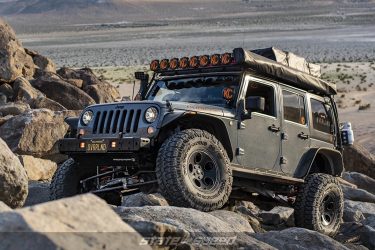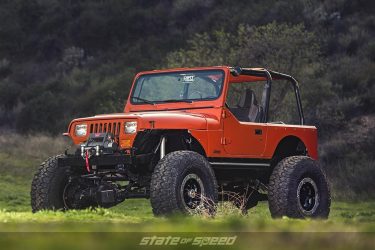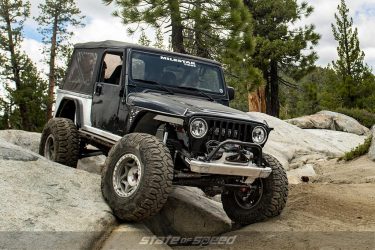X/T vs A/T R Tires:
Which Patagonia Tire Is Better for Your Application?
Tires are the most important modification you can make to your off-road vehicle. Think about it; they are the point of contact between your rig, and the ground. Do you want your vehicle wearing hiking boots, or flip flops? Although they are very different, both types of footwear offer superior performance when used as intended; the same goes for your tires. To the casual observer, Milestar Tires Patagonia X/T, and A/T R might look similar, but the fine details set these tires apart.
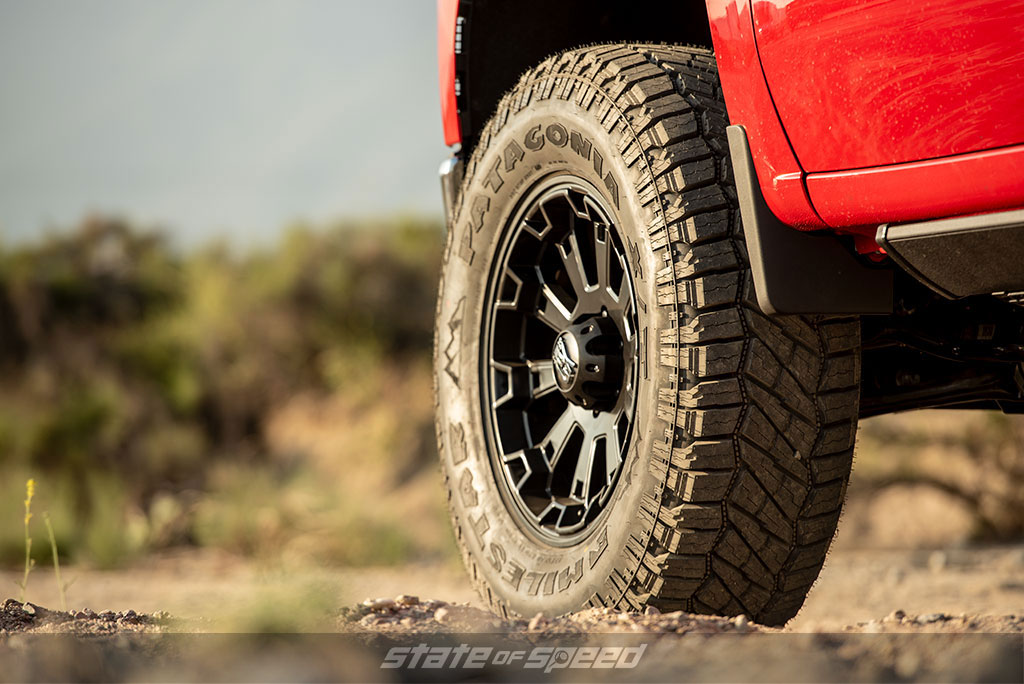
Tires: Patagonia X/T
Size: 37×12.5 R20 LT
When engineers design tires, they have to target the intended use of the tire, what types of vehicles will use the tire, and many other factors in order to come up with the end result. A tire that will do duty on a heavy 4×4, or large truck is different from something intended for street use on a passenger car. It’s easy to look at both extremes, and point out the differences, but what about those tires in the product line that are much more versatile? The Milestar Patagonia A/T R, and X/T can be used on a wide range of vehicles. That’s why they are available in a variety of sizes, and load ranges from 15 inch diameters, all the way up to 20 inches. Load ranges on the A/T R include C, D, and E. The X/T ranges from D to F.
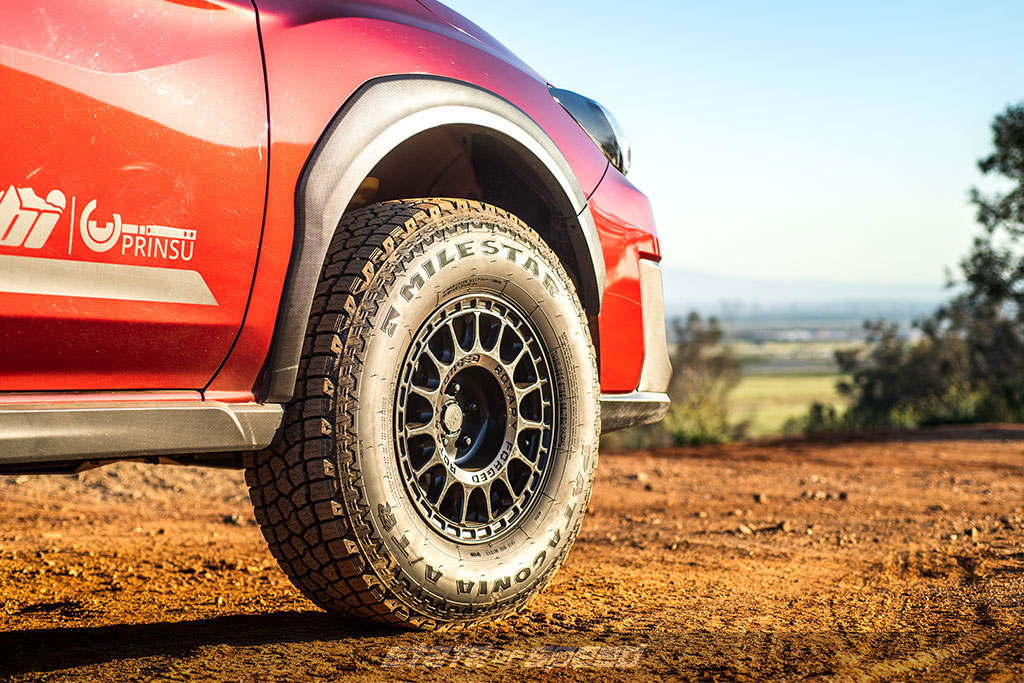
Tires: Patagonia A/T R
Size: LT235/75 R15
Load range letters designate the weight carrying capacity of a tire based on the amount of air pressure they can hold, and number of plies found in their construction. As the letters go down the alphabet, the capacity rises. A load range F tire can hold much more weight than a load range C. Typically a higher load range will also mean a stiffer side wall that will affect the ride quality on pavement, and the ability of the tire to be aired down off road. If you have a light weight 4×4 like a Suzuki Samurai, or a bobbed Toyota pick-up, you don’t need the same load range tire as a full size diesel crew cab 4×4 hauling a slide-in camper. However, advances in tire technology have allowed for greater strength of materials used in construction. Therefore a newer system based more on weight capacity rather than amount of plies is now in use. The older letter designation will probably be phased out. For now, Milestar tires carry both designations.
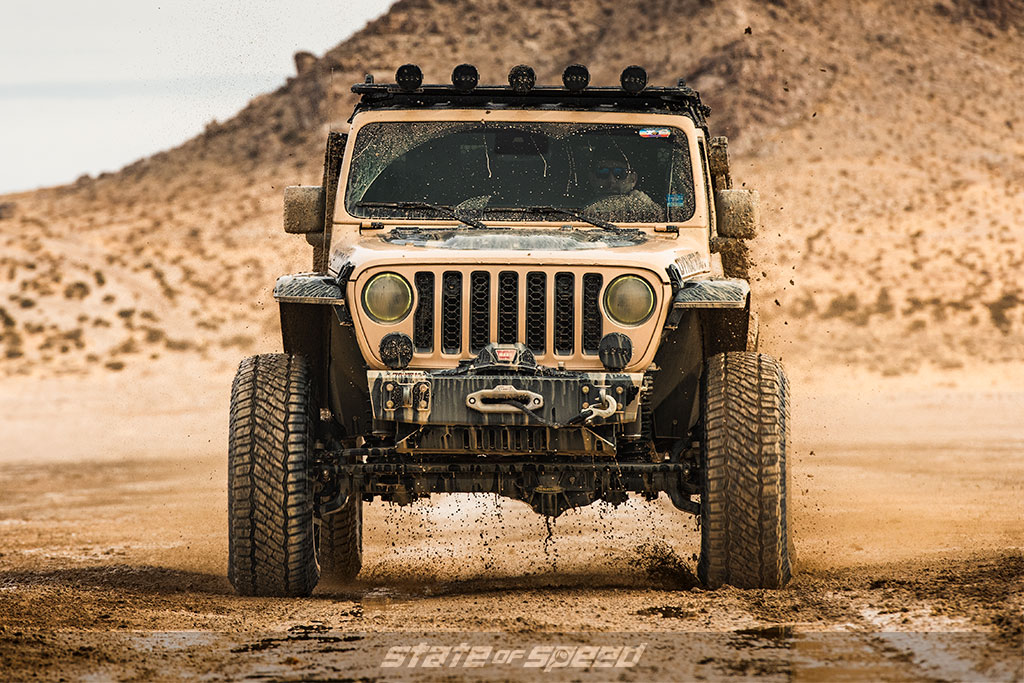
Tires: Patagonia X/T
Size: 40×13.5 R17LT
Take for instance a Patagonia XT in size 37×12.50-R17LT. The load rating is D, and the service index is 124Q. If you look at a load capacity conversion chart you will see that the 124 designates a load capacity of 3,527 pounds. The Q is the speed rating that happens to be 99 miles per hour. If we compare the same sized tire in the X/T, and the A/T R, you will see that they both have the same weight rating despite the A/T R having 2 ply sidewall construction, and the XT having 3 plies. Milestar engineers have figured out how to use different materials and construction to allow different properties in the 2 tires without sacrificing load capacity. The A/T R can have a smoother ride on pavement, and the XT can have greater sidewall puncture, and abrasion resistance. Now you know the reason why the new system is needed.
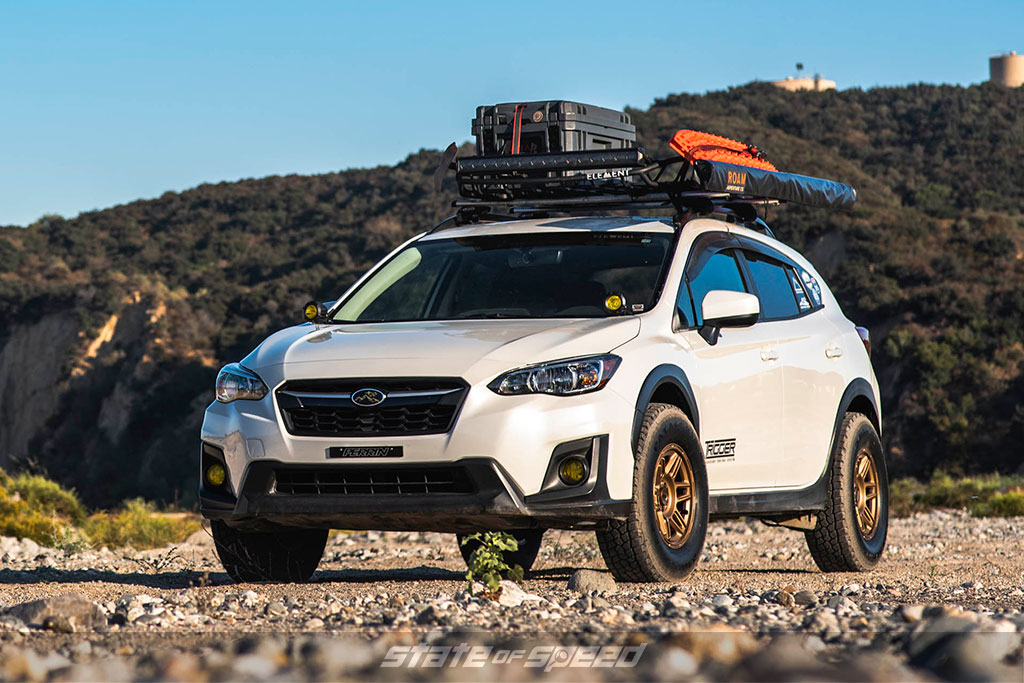
Tires: Patagonia A/T R
Size: LT235/75 R15
Next we come to rubber compound. To put it into simplest terms, the harder the compound, the greater the mileage you will get out of the tire. The softer the compound, the greater it will grip. That’s not to say that a harder compound can’t grip as well; that’s where tread design comes into play. Of course, you have to take terrain into the equation. In off-road situations, not only does the tire have to grip, but it also needs to flex in order to conform to uneven surfaces. The A/T R has a tread life rating of 4.5, and a 50 thousand mile tread life warranty. If within 5 years from the date of installation, the tire wears evenly across the tread down to the tread wear indicators (2/32nds of an inch of tread remaining) before providing the minimum warranted miles of service as indicated by the vehicle odometer, a credit will be issued toward the purchase of a new tire on a pro-rated basis to the actual mileage received. The XT has a 40 thousand mile warranty. The difference between the two tires is the tread compound. The X/T has to be more flexible, so it’s a softer compound. This gives us another hint as to which tire is right for you.
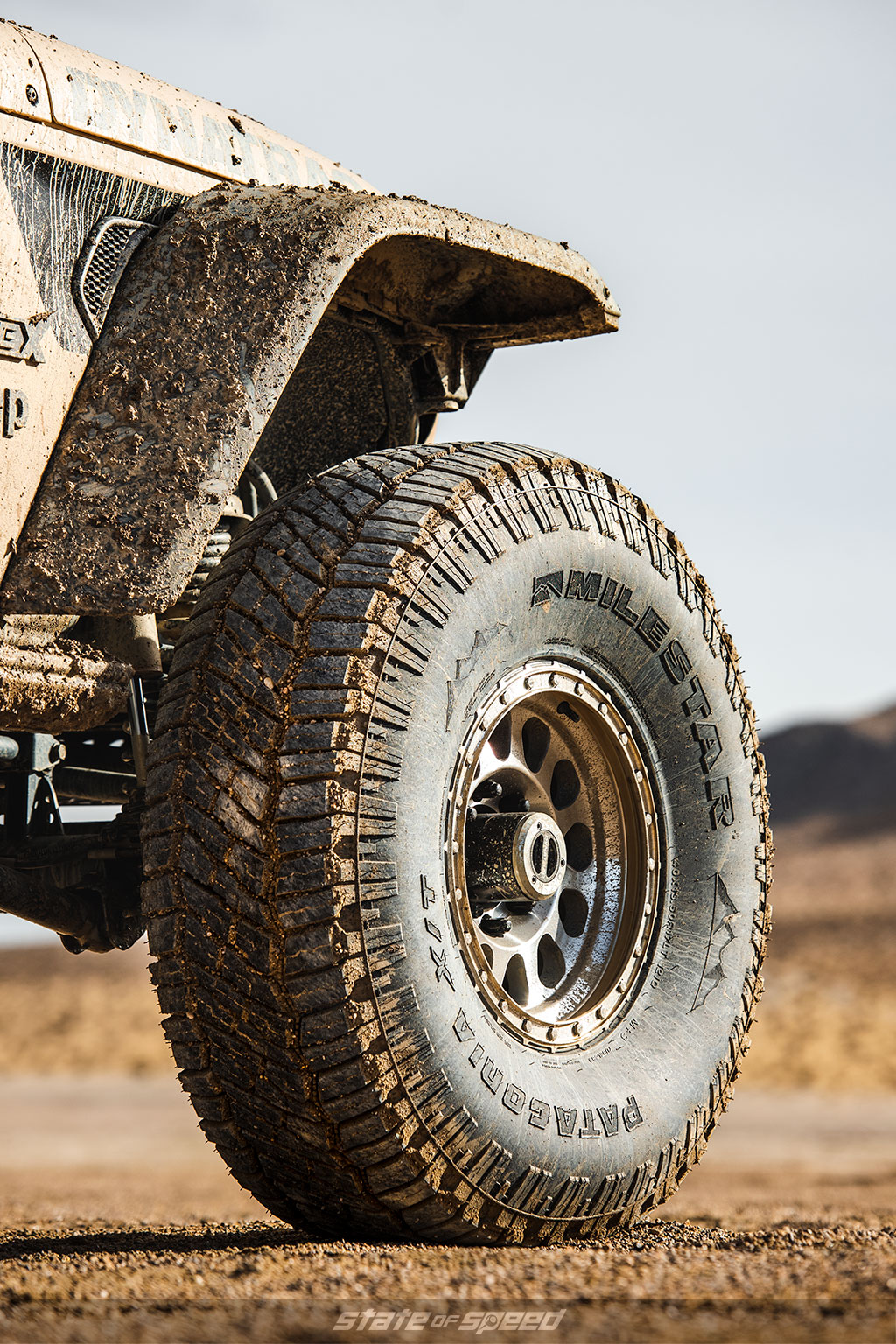
Tires: Patagonia X/T
Size: 40×13.5 R17LT
So far we’ve looked at some fairly simple aspects of tire design. Once we look at tread design, it starts to get a little more complicated. Let’s first look at the extremes. A drag race tire is completely smooth, and very soft. It is built for maximum traction on a smooth, clean, and dry surface. A sand tire (commonly referred to as a paddle tire) has big scoops that dig into the soft sand. Neither one would be practical on the street. Any tire that drives on the roadway has to have the handling characteristics capable of steering, braking, and accelerating in many varied conditions. Roads can be wet, or dry; smooth, or bumpy, hotter than a frying pan, or covered in ice. Once you travel off the road, you encounter all kinds of surfaces like mud, rocks, sand, or silt. Has anyone tried to pull a boat and trailer up a grass covered hill down by the lake? I think the technical term is slicker than snot. That’s where the tread design comes into play, and that’s where the A/T R, and X/T start to have greater differences.
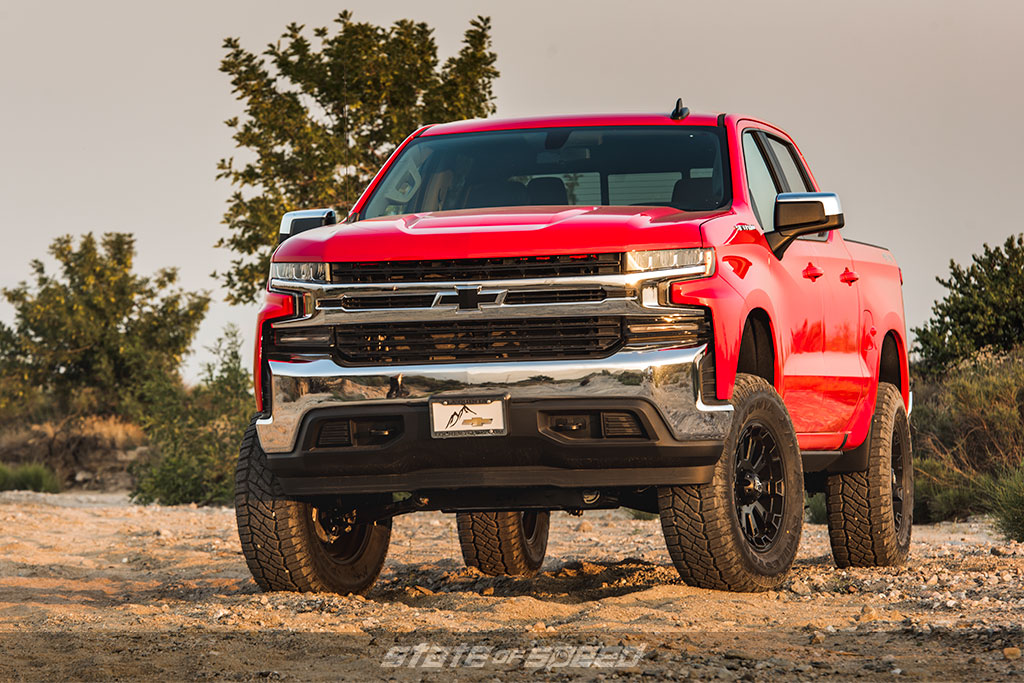
Tires: Patagonia X/T
Size: 37×12.5 R20 LT
While both tires have off-road capability, the A/T R has a tread design that puts more rubber on the road to give better performance on the pavement. The X/T is more suited for off road use due to its deeper and wider voids that shed mud, and dig into loose dirt. Both tires are a great addition to any rig; it just depends on your needs. If you travel long distances on the highway to get to the trails, the A/T R’s exceptional tread life, and good road manners might be your choice. Those who get into more challenging conditions might like the flexibility, and more aggressive tread pattern of the X/T. Either way, Milestar Tires has you covered.
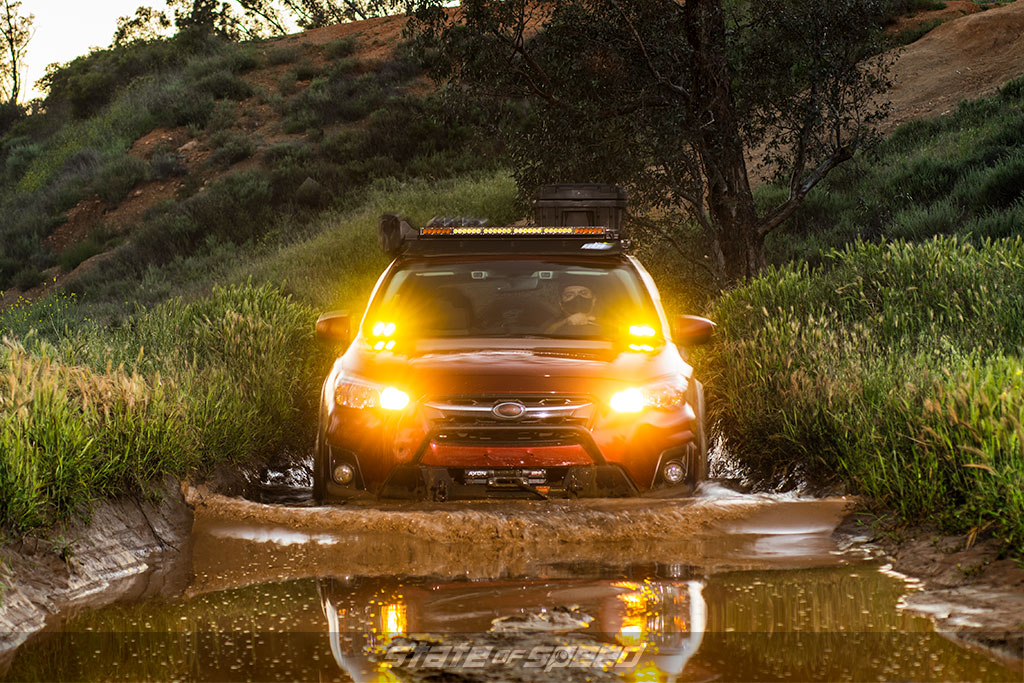
Tires: Patagonia A/T R
Size: LT235/75 R15


